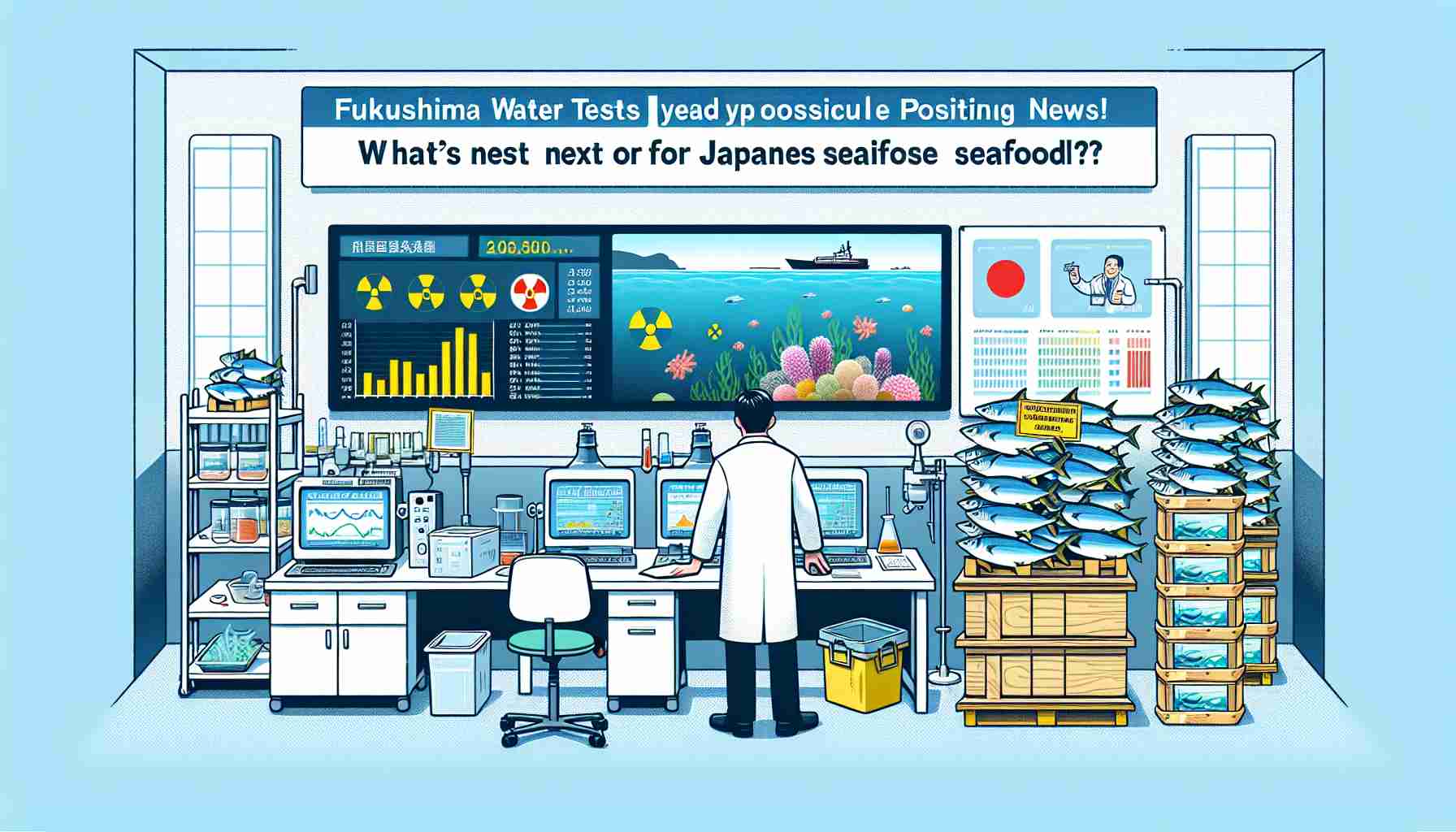Fresh Insights from China on Fukushima’s Impact
Recent tests conducted by Chinese scientists on seawater samples near the Fukushima nuclear site reveal encouraging findings that could lead to a revival of Japanese seafood imports. The samples, taken in mid-October, mark a significant step as they are the first to be collected under international supervision from the location where contaminated water from the Fukushima Daiichi Nuclear Power Plant was discharged.
The China Atomic Energy Authority (CAEA) highlighted that these results showed no harmful effects on local marine life, stirring discussions about lifting the longstanding ban on Japanese seafood. According to a representative from China’s foreign ministry, ongoing independent testing will continue to enhance international oversight of the discharge process. She stated that these initial findings are just a beginning and more evidence will be necessary before reconsidering the seafood import restrictions.
The analyses of the seawater samples found no concerning levels of radioactive elements like tritium or caesium-137, which are often feared for their instability. Experts suggested that the resumption of seafood imports will depend on further scientific assessments and Japan’s ability to ensure the safety of its marine products. The culmination of these efforts will determine the future of Japan’s seafood trade with China, as both nations navigate the complexities of safety and environmental concerns.
Examination of Broader Implications
The recent findings from tests conducted by Chinese scientists on seawater near Fukushima carry profound implications for both the global economy and cultural perceptions surrounding nuclear energy. If Japan succeeds in revitalizing its seafood exports, it not only aids its fishing industry, which faced bankruptcy following the 2011 disaster, but also reshapes international trade dynamics. The lifting of bans on Japanese seafood could signify a thawing of relations between China and Japan, potentially influencing regional economic cooperation in other sectors.
Moreover, the tests symbolize a critical shift in environmental accountability. The involvement of international oversight may lead to heightened standards and protocols in the discharge processes of nuclear facilities globally. As nations grapple with the realities of radioactive waste management, such transparency might catalyze similar partnerships elsewhere, fostering a collaborative approach to environmental safety.
Looking towards the future, global trends could tilt favorably towards nuclear energy as a viable energy source, provided that continued assessments demonstrate safety and environmental stewardship. The long-term significance of these developments will hinge on rigorous scientific scrutiny and public acceptance; modern societies must balance the pursuit of energy sustainability with the collective memory of past nuclear incidents, ensuring lessons from Fukushima are never forgotten.
New Findings from China Could Pave the Way for Japanese Seafood Imports
Insights into Fukushima’s Impact on Marine Life and Seafood Trade
Recent developments in the aftermath of the Fukushima disaster have generated optimism regarding the potential resumption of Japanese seafood imports to China. This latest round of tests, which were conducted by scientists from the China Atomic Energy Authority (CAEA), involves seawater samples collected from the vicinity of the Fukushima Daiichi Nuclear Power Plant and marks a significant advancement in international safety oversight.
# Test Findings and Implications
The seawater samples analyzed in mid-October revealed no detectable levels of harmful radioactive elements such as tritium or caesium-137. These elements have historically raised concerns about the safety of marine life in the region, making the results a hopeful sign for both Chinese authorities and the Japanese seafood industry.
The positive findings have sparked discussions among policymakers regarding the potential lifting of the longstanding ban on Japanese seafood imports. A representative from China’s foreign ministry emphasized the necessity for ongoing independent testing to ensure transparency and safety in the discharge process, highlighting that while initial results are promising, they form just the beginning of a rigorous safety assessment.
# Future of Japanese Seafood Trade: Prospects and Considerations
Experts assert that the eventual resumption of seafood imports will rely heavily on thorough scientific evaluations. Among the key factors influencing this decision will be Japan’s commitment to maintaining high safety standards for its marine products. Continuous monitoring and testing will be essential to address any concerns from Chinese consumers and regulators.
Pros and Cons of Resuming Japanese Seafood Imports:
– Pros:
– Restoration of trade relations between China and Japan, leading to economic benefits for both countries.
– Increased availability of high-quality seafood products previously banned from the market.
– Potential enhancement in scientific collaboration between Japan and China regarding nuclear safety and marine life monitoring.
– Cons:
– Public apprehension regarding food safety amid fears of contamination.
– The ongoing need for strict regulatory frameworks to ensure transparency and consumer trust.
– Potential backlash from domestic seafood producers in China who may be concerned about competition from imported products.
# Future Trends in Food Safety and Environmental Monitoring
As international relations continue to evolve, food safety regulations and environmental monitoring practices are expected to advance. The recent testing signifies not only a shift in the culinary landscape but also emphasizes the importance of science-driven policies in environmental management.
China’s willingness to conduct independent testing suggests a growing trend towards enhanced international collaboration on environmental safety, which may serve as a model for other nations facing similar challenges related to nuclear incidents.
# Conclusion
The recent findings from Chinese scientists bring new hope for the revival of Japanese seafood imports. While the path forward involves careful scrutiny and a commitment to safety, these developments underline the importance of scientific integrity in rebuilding trust and trade relations. Moving forward, the focus will be on continued rigorous testing protocols and transparent communication between nations to foster a safe and sustainable seafood market.
For more information on international trade agreements and seafood import regulations, visit FAO.
The source of the article is from the blog girabetim.com.br



